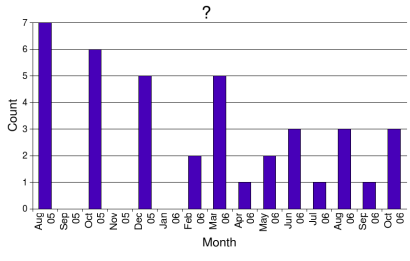This post addresses the Closed world of chemistry publishing and offers some not very optimistic comments. I subscribe to the CHMINF-L list which serves the chemical information community. Much of the traffic is about specific (usually commercial) chemical information services or where to find esoteric pieces of information. It reflects the innate conservatism of chemistry. I and a few others have from time to time raised the question of how do we take chemistry into the current century, but generally fail to get much of a response. There is, for example, little belief in the value of Wikipedia, etc. or how to develop virtual chemical communities.
Occasionally, however, some of the membership raise the question of Open Access (and implicitly why chemistry is effectively the least enlightened major scientific discipline by having no major Open Access journals). Michael Engel is one of the few list members who tries to question the way things are currently done and writes (Open Access and costs):
I still do not understand the 3000 USD per paper. How much unnecessary overhead costs are in this figure ?
I wonder how much it would cost to have a Chemistry journal atvirtually no cost to the author and the reader.Couldn’t it start simple ?– no printed issues– no advanced layout; just html/xml and export scripts (pdf)– open refereeing (registered users only, eventually following theexample of web.de which connects the username to a postal address bysending the activation code by postal mail, mailing costs could besponsored by advertising)– a lot of sponsors and advertisement – as in printed journals– allowing mirroring– allowing miningPossible problems:– referees don’t want to comment without the shield of anonymity– vandals and people trying to change papersScaling possible ?100 papers/year -> 1’000 -> 10’000 -> 100’000What would be necessary for the reader to make a comfortable reading possible ?– Good and large index for scrolling and email alerts (automaticindexing is necessary)– Online reading of index, abstract and papers in a Google Reader style.I would really appreciate if some of the CHMINF reader could add some comments/links/hints etc.

- Steve Bachrach ran the Internet Journal of Chemistry for a period. It was at (http://www.ijc.com/) but the server no longer runs. I was on the board and also authored and refereed papers. Refereeing could be done in very short time and the paper appeared within days. It wasn’t Open (in today’s terms it is Toll Access – no author charges, but subscription-based). The scholarly record is, I think, still extant but may be in danger of disappearing with negotiations with the owner (not Steve)
- Jean-Claude Bradley publishes his science directly onto the Internet (UsefulChemistry molecules) without peer-review but Openly visible This is effectively a zero-cost model (marginal academic costs – e.g. a university of personal server and effectively part of the actual practice of science).
- The chemistry blogosphere now contains high quality reviews such as TotallySynthetic which reviews peer-reviewed articles in closed access chemistry publications with the subject of natural product synthesis. I believe that this is effectively peer-reviewed by the community.
- Wikipedia has a large and growing amount of factual chemistry material which will (I believe and hope) challenge the current overpriced and out-of-date methods of secondary publication in chemistry. IMO Wikipedia is also effectively peer-reviewed by the community.
- The Wellcome trust and other funders
- The changing face of the information world, such as Flickr, Facebook, etc.
- The increasing economic unsustainability of conventional publishing.
Pingback: Things I noticed #13 at business|bytes|genes|molecules
Pingback: Electric Cars and Open Access